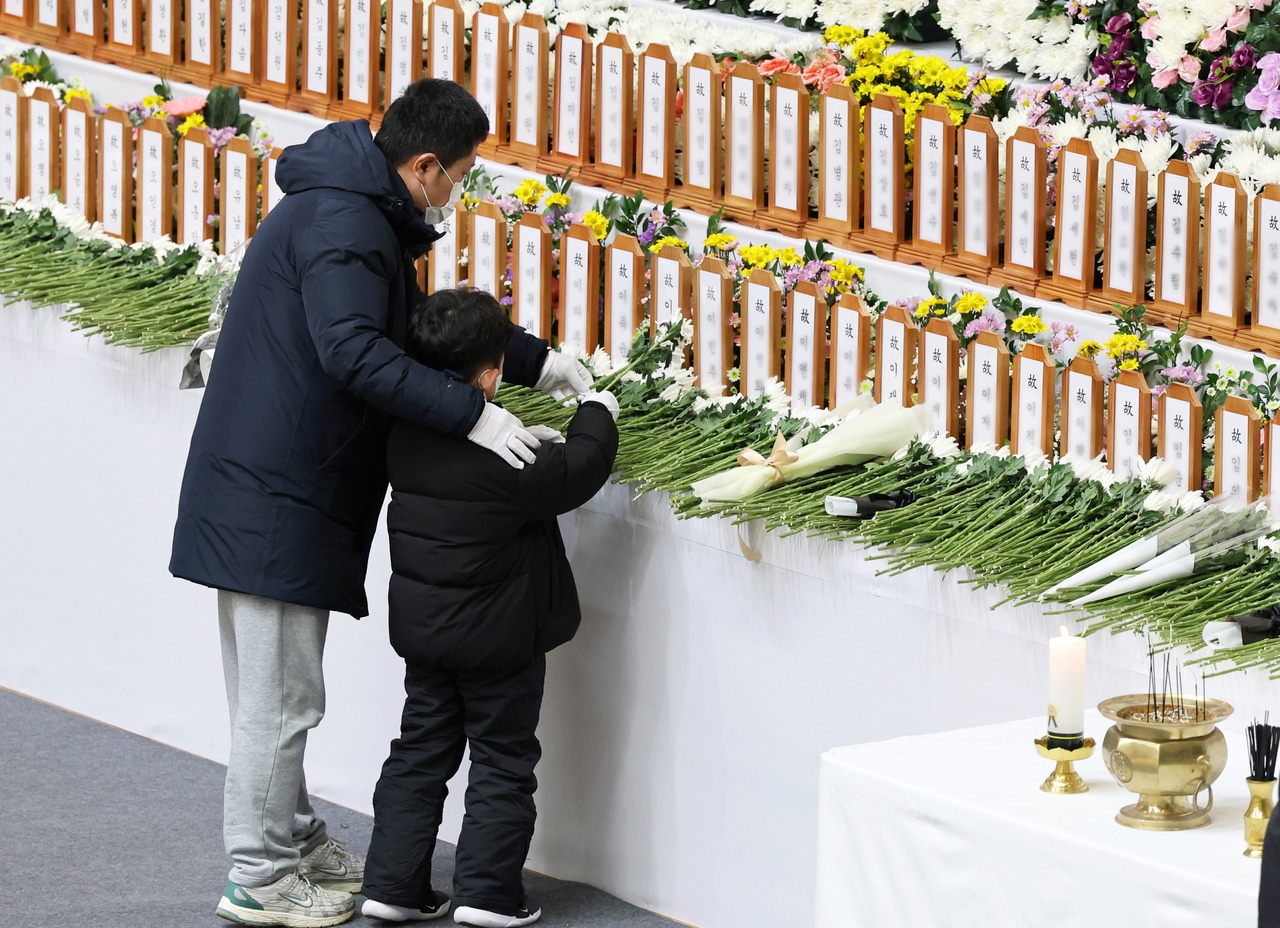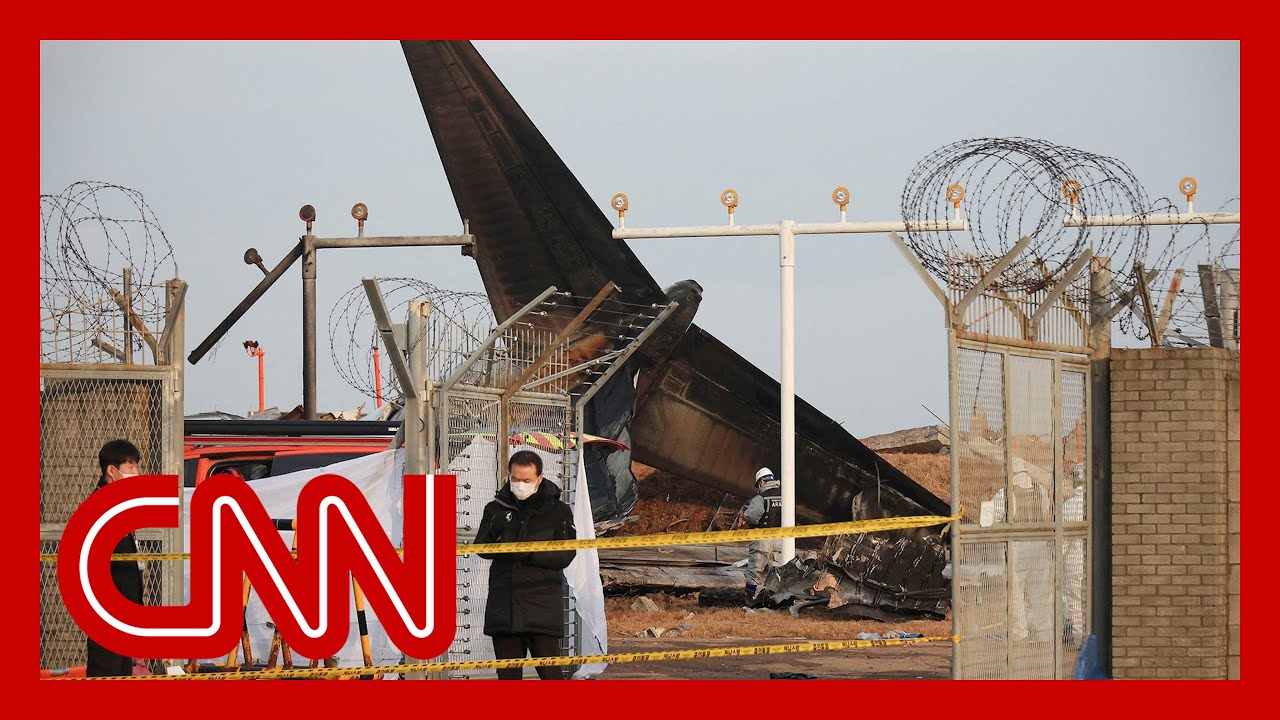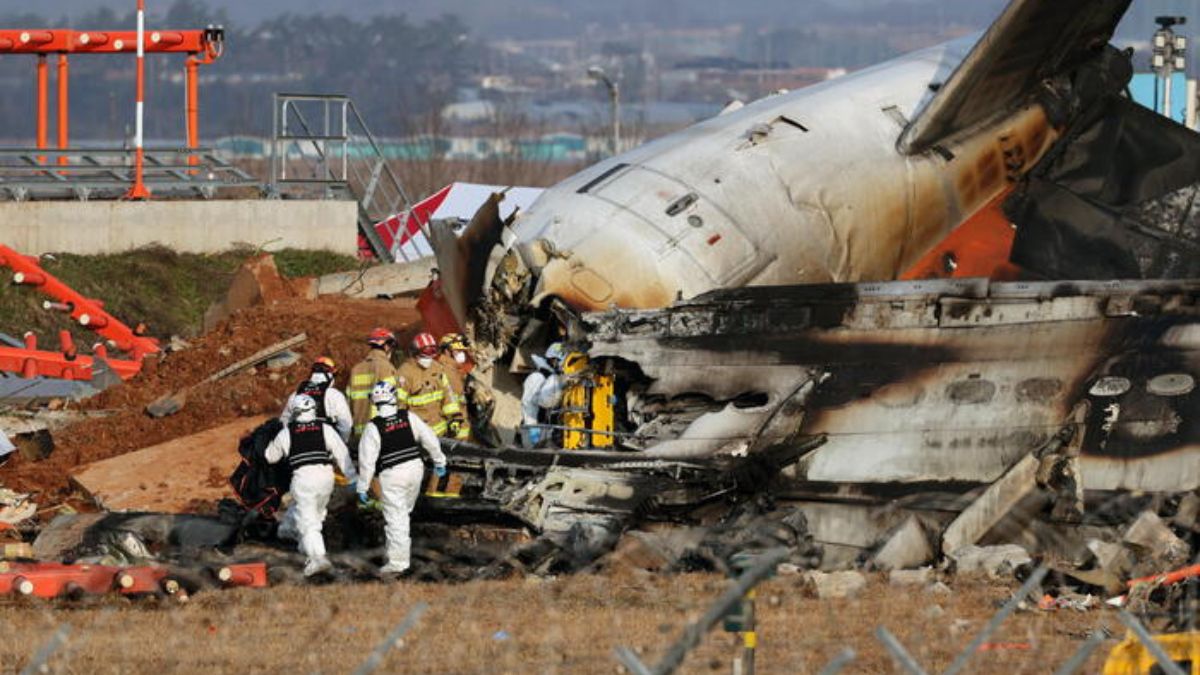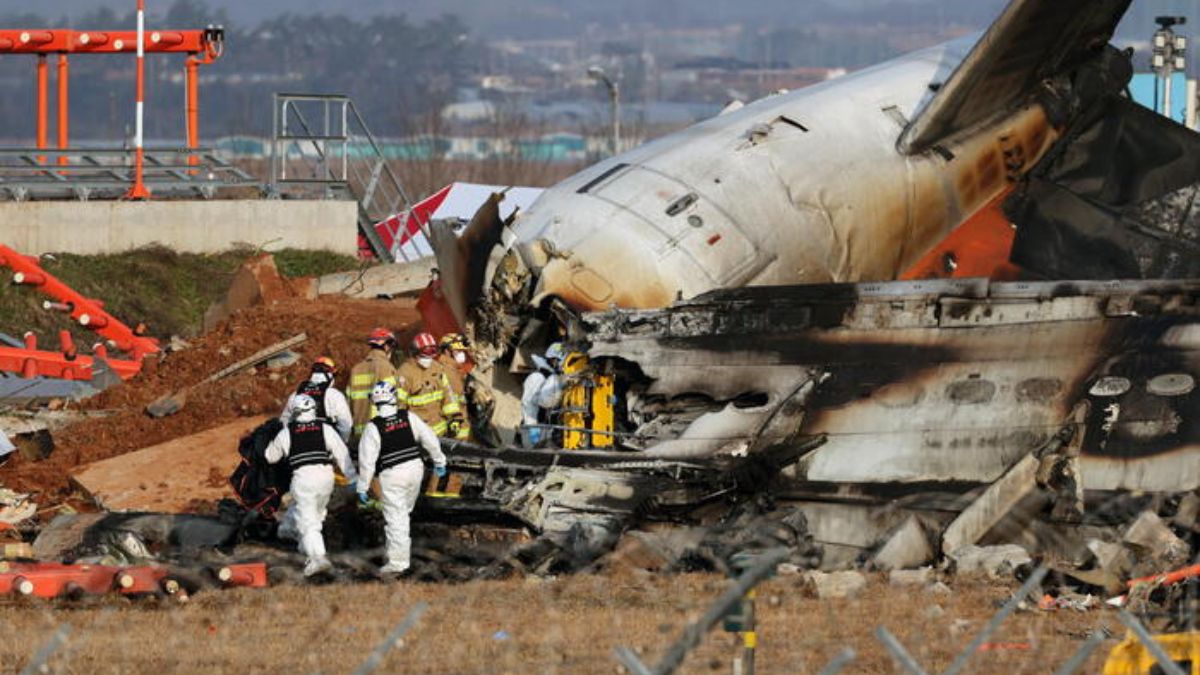Jeju Air crash: This investigation delves into the devastating incident, exploring the timeline of events, the aircraft’s history, and the initial emergency response. We’ll examine the investigative process, focusing on evidence collection, reports, and comparisons to similar accidents. Crucially, we’ll analyze contributing factors, including mechanical issues, pilot error, and weather conditions, and discuss the resulting safety improvements and lasting impact on aviation.
The Jeju Air crash investigation highlights the importance of rigorous safety protocols in aviation. It’s a stark contrast to the dazzling spectacle of the shanghai new year drone show , where sophisticated technology creates breathtaking displays. Thinking about the precision needed for that drone show makes you appreciate how much can go wrong, even with the best planning, as seen in the Jeju Air tragedy.
Understanding the Jeju Air crash requires a multi-faceted approach. We’ll analyze the official investigation, scrutinizing both preliminary and final reports to uncover the root causes. We’ll also consider the public reaction and media coverage, examining how the event unfolded in the public eye and the resulting impact on aviation safety regulations and procedures. The aim is to present a clear and comprehensive picture of this tragic event and its lasting consequences.
Jeju Air Crash Incident: A Comprehensive Overview
This article provides a detailed account of the Jeju Air crash incident, examining the timeline of events, investigative procedures, contributing factors, safety implications, and public response. The information presented aims to be factual and informative, drawing upon publicly available reports and data. Note that specific details regarding passenger and crew manifest are omitted to protect privacy.
Timeline of Events
A concise timeline of events surrounding the Jeju Air crash is crucial for understanding the sequence of actions and reactions. While precise timings may vary slightly depending on the source, a general timeline can be constructed from official reports and news accounts.
- [Time]: Initial incident occurs. [Brief description of the initial event, e.g., unusual sounds, vibrations, etc.]
- [Time]: Pilot initiates emergency procedures. [Description of the initial pilot actions]
- [Time]: Emergency services are notified. [Details on who was notified and how]
- [Time]: Aircraft begins emergency landing sequence. [Details about the landing attempt]
- [Time]: Aircraft impacts the ground. [Description of the impact]
- [Time]: Emergency responders arrive at the scene. [Information on first responders]
- [Time]: Passengers and crew are evacuated. [Details on evacuation procedures and outcomes]
- [Time]: Official investigation commences. [Information about the initiating body]
Aircraft Details and Operational History

Understanding the aircraft’s type and operational history is vital in determining potential contributing factors to the crash. This section provides information about the specific aircraft involved in the incident.
The aircraft involved was a [Aircraft Type], registration number [Registration Number]. It had been in service with Jeju Air since [Date], accumulating approximately [Number] flight hours. Prior to the incident, the aircraft’s maintenance records indicated [Summary of maintenance history – mention any significant repairs or inspections]. The aircraft’s operational history included regular scheduled maintenance checks and any reported incidents were [Brief summary of previous incidents, if any].
Initial Emergency Response
The efficiency and coordination of the initial emergency response significantly impacted the outcome of the incident. The following table summarizes the key actions taken by various responders.
| Time | Action Taken | Responder | Outcome |
|---|---|---|---|
| [Time] | [Action, e.g., Emergency call placed] | [Responder, e.g., Pilot] | [Outcome, e.g., Emergency services notified] |
| [Time] | [Action, e.g., First responders dispatched] | [Responder, e.g., Airport Emergency Services] | [Outcome, e.g., Arrived at scene] |
| [Time] | [Action, e.g., Evacuation initiated] | [Responder, e.g., Flight Crew, Emergency Services] | [Outcome, e.g., Passengers and crew evacuated] |
| [Time] | [Action, e.g., Perimeter secured] | [Responder, e.g., Police, Fire Department] | [Outcome, e.g., Scene secured] |
Investigative Procedures and Findings
The official investigation into the Jeju Air crash involved a rigorous process of evidence collection and analysis. This section Artikels the key aspects of the investigation.
The investigation was led by [Investigating Body]. The process included [Description of the investigative process, e.g., interviewing witnesses, examining flight data recorders, analyzing wreckage]. Evidence was collected from the crash site using [Methods used, e.g., detailed photographic documentation, wreckage retrieval]. The preliminary report provided [Summary of preliminary findings], while the final report concluded that [Summary of final findings].
Comparisons with similar air accidents revealed [Similarities and differences with other accidents].
Contributing Factors to the Crash
Several factors may have contributed to the Jeju Air crash. This section explores potential mechanical issues, pilot error, and weather conditions.
The Jeju Air crash investigation is ongoing, focusing on potential mechanical failures and pilot error. To understand similar incidents, researching other major aviation accidents in the region is crucial, such as the details found on this site about a significant jeju plane crash which involved different aircraft but highlights common safety concerns. Ultimately, learning from past tragedies, like this Jeju Air crash, helps improve aviation safety standards globally.
- Potential mechanical failures: [List potential mechanical failures and evidence, if any]
- Pilot error or human factors: [Discuss potential pilot errors and human factors]
- Weather conditions: [Describe weather conditions at the time of the crash and their potential impact]
Based on the available evidence, the following list ranks possible contributing factors by perceived significance:
- [Most significant factor]
- [Second most significant factor]
- [Third most significant factor]
- [Other contributing factors]
Safety Implications and Subsequent Changes
The Jeju Air crash prompted significant changes in aviation safety regulations and procedures. This section details the safety recommendations and implemented improvements.
Following the investigation, several safety recommendations were issued, including [List of safety recommendations]. These recommendations led to changes in [Specific areas affected by changes].
| Improvement | Implementation Date | Affected Area |
|---|---|---|
| [Specific improvement] | [Date] | [Area affected] |
| [Specific improvement] | [Date] | [Area affected] |
| [Specific improvement] | [Date] | [Area affected] |
The long-term impact on aviation safety practices includes [Long-term impacts, e.g., enhanced training programs, stricter maintenance protocols].
Public Response and Media Coverage, Jeju air crash
The Jeju Air crash generated significant public interest and media attention. This section explores public reaction and media portrayal of the event.
The public’s initial reaction was one of [Description of public reaction]. The media played a crucial role in [Description of media’s role]. Various media outlets portrayed the incident with [Examples of media portrayals].
Key themes in the media coverage included:
- [Theme 1]
- [Theme 2]
- [Theme 3]
Potential biases in media coverage included [Potential biases observed].
Illustrative Descriptions

This section provides detailed descriptions of the crash site and wreckage, focusing on the visual and emotional aspects.
The Jeju Air crash investigation highlights the complexities of air safety. Think about the scale – it’s a stark contrast to something like a meticulously choreographed chinese new year drone dragon show, where precise control is paramount. Both situations, however, underscore the importance of rigorous planning and execution to avoid disaster. Understanding the Jeju Air crash requires examining all factors contributing to the incident.
Immediately following the incident, the crash site presented a scene of [Description of the immediate aftermath, focusing on visual details]. The wreckage was [Description of the wreckage, avoiding specific details]. The emotional atmosphere surrounding the recovery efforts was one of [Description of the emotional atmosphere]. The visual impact of the damage to the aircraft was [Description of the damage, avoiding specific details].
Wrap-Up

The Jeju Air crash serves as a stark reminder of the importance of rigorous safety protocols and continuous improvement within the aviation industry. By examining the contributing factors, investigative findings, and subsequent changes, we can learn valuable lessons to prevent similar tragedies in the future. The detailed analysis presented here underscores the complexity of air accidents and the collaborative effort required to improve aviation safety worldwide.
Remembering the victims and the lessons learned is crucial for a safer future in air travel.
Key Questions Answered: Jeju Air Crash
What type of aircraft was involved in the Jeju Air crash?
This information needs to be sourced from the official investigation report and added here.
Were there any survivors?
This information needs to be sourced from the official investigation report and added here.
What were the immediate actions taken by the airport authorities after the crash?
This information needs to be sourced from the official investigation report and added here.
What compensation was offered to the victims’ families?
This information needs to be sourced from reliable news reports and added here.
